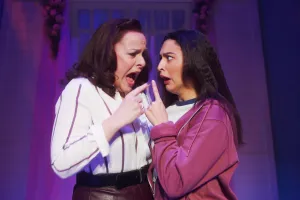Going It Alone
I’ve been mulling over the idea of writing a blog post on one-person Fringe shows for the last few days, but seeing Lockerbie: Unfinished Business the other day has spurred me on to organise my thoughts.
I’m often struck, when watching one-person plays, by a sense of dissatisfaction. The writing might be wonderful and the performance flawless, but without other performers to bounce things off, dramatic tension and decent pacing are difficult to achieve. Why are theatre makers so eager to embrace what is, in effect, a limited dramatic device, and what types of work succeed as one-person shows?
It’s no surprise that the one-person format is so popular at the Fringe. At the upper end of the scale, producers know that they’ve got a much better chance of making money on a one-person show than on a three or four-hander which will cost them huge sums in rent and per diems.
At the lower end of things, writers, actors and producers making their Fringe debuts might feel – quite rightly – that a one-person show is a good way of dipping a toe without risking too much cash.
Now, I don’t begrudge anyone the desire to make money at the Fringe, but for a show to succeed creatively, artistic decisions must take priority over financial ones. It’s a balancing act, of course – until theatre practitioners stop needing to eat, money will always be a factor – but if there isn’t creative justification for condensing a drama into a monologue then it shouldn’t be done.
Rather than focusing on one-person plays that don’t have dramatic integrity, I’ll just mention a few that I think do and tell you why I think they succeed, starting with Lockerbie: Unfinished Business, which prompted this post.
The show takes the form of a lecture by Dr Jim Swire, whose daughter Flora died in the Lockerbie bombing of December 1988. Swire has spent the last 22 years campaigning for justice for the victims of the terrorist attack and presenting his story in the first-person is a very effective way of telling his story. Writer and performer David Benson and director Hannah Eidinow use the lecture format as a framework, coming away from it at crucial moments to allow Swire to elaborate on the personal elements of his experience. This show couldn’t exist in any other format; the subject demands a one-person play.
Another effective use of one-person format is storytelling shows. In this type of show, the magic relies on the audience having total faith in a narrator and going with them on a journey. Daniel Kitson’s It’s Always Right Now, Until It’s Later is an excellent example of the genre. Kitson himself has no involvement in the stories he is recounting and there is nothing particularly dramatic about his role, but there is drama within the tales he tells. It’s Kitson’s capacity to evoke that drama that makes him such an effective storyteller and makes this style of one-person show so satisfying.
The final style of one-person play I’ll mention here (there are lots more that work, but this post is getting rather long as it is) is the multi-character piece, where a performer is called upon to transform herself or himself into several different characters over the course of a performance. For this to serve as more than just a showcase of a performer’s talents, however, there must be a strong story to tell. When this device works, as with Ali Kennedy-Scott‘s The Day the Sky Turned Black, which revisits the deadly Black Saturday bush fires that blighted South Australia in 2009, the fact that all the characters are being presented by one single performer is a powerful reminder of a shared humanity.
– By Jo Caird












